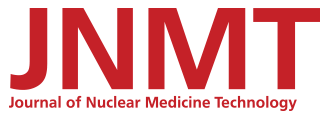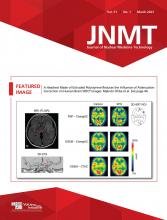Kathy S. Thomas, MHA, CNMT, PET, FSNMMI-TS
By the time this editorial is published, the phrase “Happy New Year!” will be more than a little stale; however, with any luck, the new year will be happy as the world tentatively returns to something approaching a new “normal.” For the nuclear medicine community, the new normal includes an opportunity to gather once again, either in person or virtually, to share the latest advances in molecular imaging and therapeutic procedures at the Mid-Winter Meeting in San Francisco, California. I hope you had the opportunity to kick off the new year in a positive way by attending the conference and catching up with friends and colleagues.
Once again, the continuing education (CE) articles in this issue offer a diverse selection of topics. The SNMMI Clinical Trials Network continues its series discussing good clinical practices required in clinical research (1). The next CE offering discusses how V/Q lung imaging, a tried-and-true procedure in nuclear medicine for decades, can be enhanced using SPECT or SPECT/CT imaging (2). Finally, an overview of many PSMA-directed radiopharmaceutical therapy clinical trials using α- or β-emitters in prostate cancer is discussed (3).
The Quality and Practice Management section introduces a potential role nuclear medicine technologists may have to assist the radiologist in calculating total metabolic tumor volume for patients with diffuse large B-cell lymphoma (DLBCL) (4). Additionally, Blum et al. provide quantitative data analysis of 2 90Y-microsphere products comparing exposure rates and special safety considerations (5).
In the United States, radiation safety and protection guidelines are commonplace; however, critical data are required in developing countries to optimize diagnostic reference levels (DRLs) and radiation protection guidelines in nuclear medicine imaging, including SPECT, SPECT/CT, and PET/CT. Fayad et al. discuss Qatar’s work establishing DRLs for administered activity optimization for nuclear medicine procedures (6).
The scientific manuscripts offer an assortment of topics, including optimized image quality for 90Y PET imaging, respiratory gating for lung lesions, a 99mTc-DMSA biodistribution issue associated with the quality of saline used in preparing the radiopharmaceutical, and an improved headrest for PET brain imaging.
The teaching case studies offer a variety of examples where key facts or concepts are demonstrated and were helpful in a specific diagnosis.
As always, I will conclude with my plea for your ideas, suggestions, or comments to improve JNMT content. But most importantly, I would also encourage you to consider sharing your expertise by writing up a research study from your institution, an interesting case study, or a brief communication discussing a project that resulted in a positive outcome in your work environment. Don’t know where to start? Help is available! Contact me at ksthomas0412{at}msn.com.








